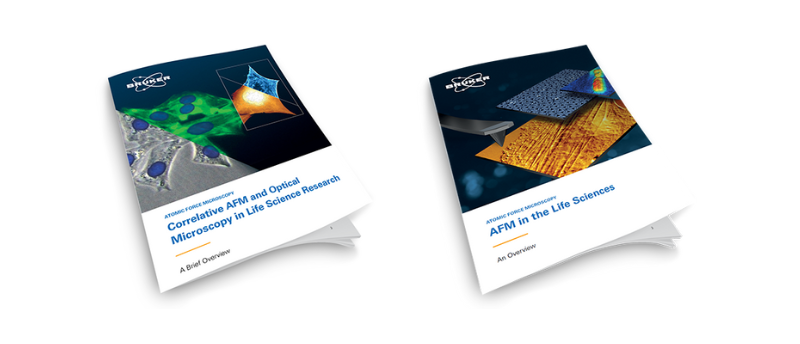Enhance your research capabilities with AFM: eBooks from BrukerNano

Recognition of the crucial role that nanomechanical properties play in the structure and function of biological systems is growing steadily. Atomic force microscopy (AFM), a high-resolution surface analysis technique, has emerged as a key platform for the multiparametric quantification of these properties in samples ranging from individual cells and molecules to tissues and biomaterials.
Learn more about AFM with these comprehensive eBooks from BrukerNano that take you from the basics to an overview of new, innovative approaches and novel applications that can enhance your research capabilities.
This eBook provides a concise overview of new, innovative approaches and novel applications that highlight the potential of correlative microscopy for multi-level analysis. It is ideal for microscopy enthusiasts, experts and non-experts alike, as well as those new to AFM or wishing to explore new techniques to enhance their research capabilities.
Readers can expect to learn more about:
- The basics: inverted vs upright optical systems, tip scanning vs sample scanning
- Features and modes specifically designed to facilitate accurate correlative measurements
- Investigating large sample areas and non-transparent samples and substrates
- Live-cell imaging
- Novel case studies illustrating the potential of combining AFM with optical techniques, from studying the role tissue mechanics play in neurogenesis und brain damage using fluorescence-guided navigation, to investigating liver fenestrations with AFM-STED microscopy and visualizing cell cycles with AFM-FLIM
This eBook provides an overview of this technology, practical tips and a host of other information valuable to both AFM users and those not familiar with the technique who are interested in how it can extend their research capabilities.
Readers can expect to learn more about:
- The working principle of BioAFM and the latest, state-of-the-art features and imaging modes
- Selecting cantilevers for specific biological applications
- Correlative microscopy and combining AFM with advanced optical techniques to enhance analysis capabilities
- Novel case studies illustrating the use of BioAFM in life science research, including the investigation of DNA origami, cellular and molecular dynamics, and microrheology of living cells, as well as AFM-based single-molecule force spectroscopy
